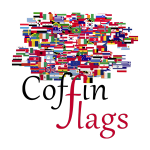Description
The Royal Air Force (RAF) is the United Kingdom’s aerial warfare force. It was formed towards the end of the First World War on 1 April 1918. Following the Allied victory over the Central Powers in 1918, the RAF emerged as the largest air force in the world at the time. Since its formation, the RAF has taken a significant role in British military history. In particular, it played a large part in the Second World War where it fought its most famous campaign, the Battle of Britain.
The RAF’s mission is to support the objectives of the British Ministry of Defence (MoD), which are to “provide the capabilities needed to ensure the security and defence of the United Kingdom and overseas territories, including against terrorism; to support the Government’s foreign policy objectives, particularly in promoting international peace and security”. The RAF describes its mission statement as “… [to provide] an agile, adaptable and capable Air Force that, person for person, is second to none, and that makes a decisive air power contribution in support of the UK Defence Mission”. The mission statement is supported by the RAF’s definition of air power, which guides its strategy. Air power is defined as “the ability to project power from the air and space to influence the behaviour of people or the course of events”.
The Royal Air Force Ensign is the official flag which is used to represent the Royal Air Force. The ensign has a field of Air Force blue with the United Kingdom’s flag in the canton and the Royal Air Force’s roundel in the middle of the fly. The RAF Ensign was introduced in 1921 after some opposition from senior members of the Royal Navy. Various countries’ air force ensigns have been based upon the RAF’s ensign. Currently, it is flown from the flagstaff of every Royal Air Force station during daylight hours and has been permanently displayed on the Cenotaph in London since 1943.







